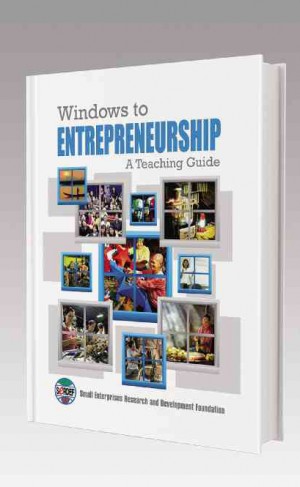
It was some five years ago when there was an explosion of local interest in entrepreneurship, thanks possibly to a bloom in books such as Kiyosaki’s “Rich Dad, Poor Dad,” inspirational tomes by Colayco and Bo Sanchez, and even a flurry of activity from civic group Go Negosyo.
All that is well and good but the fact is that, once the dust settles, it takes more than just inspiration to set up a successful business. Much more. And that’s where more serious, nose-to-the-grindstone methodologies and teaching materials become handy.
“Windows to Entrepreneurship: A Teaching Guide” (“Windows,” for short) is designed to be a tool for teachers of entrepreneurship. It is not a textbook. Rather, it is a guide for making teaching materials about entrepreneurship, and it aims to benefit a growing number of teachers of entrepreneurship in college-level business and commerce courses.
Published by the Small Enterprises Research and Development Foundation (Serdef) whose mandate is to assist in the development of business and startup activity in the country, the book provides a refreshingly 21st century take on the teaching process. For instance, it encourages a lot of online research, gathering links to relevant TED Talks about entrepreneurship, for instance, or encouraging lookups at online references for topics such as traffic count or the Philippine business registration process. In so doing, Windows manages to encourage the creation of more open, multimedia oriented teaching materials. Because, after all, isn’t innovation part of what makes for great businesses?
But Windows keeps much of the old-school methodologies as well, particularly those that work. The guide is full of stories that teachers can echo to their students, as well as a plethora of group and individual activities that can be incorporated into teaching plans, including activities that seek to identify the student’s personal competencies.
In fact, competency could well be a central theme in this teaching guide. What are you good at? What were successful entrepreneurs good at? What strategies do these translate to? This reflects the strong resource-based theoretical orientation of the material, where an aspiring entrepreneur’s own distinctive personality can become a competitive advantage for his or her firm.
It is a framework that makes sense from the small enterprise orientation of SERDEF. (For those who seek to create large-scale enterprises from the get-go, you may be better served by economic textbooks that focus more on the macro environment.)
The book is comprehensive in scope, covering topics that range from the basic (answering the soul-searching question of “Are you an entrepreneur?”), to the structural task of putting together an enterprise, and even moving on to the more touchy topic of knowing when to quit. And at its tail end, Windows even includes a number of short articles that are meant to bolster the confidence of teachers of entrepreneurship, clueing them in on the mentoring process and what their role could be to their aspiring entrepreneurial students.
Windows to Entrepreneurship is a landmark book in that it is designed to be a tool for making more tools. Armed with this teaching guide, a new breed of Filipino teachers of entrepreneurship can more confidently set about creating entrepreneurship courses that are compelling, informative, and highly sensible. In that sense, by pursuing a path of “teaching teachers how to fish,” this guide becomes a powerful manifestation of the valuable mandate by which SERDEF lives by.
(The author is with the business faculty of the University of the Philippines Diliman, is a management consultant and is an active member of the Philippine Startup Community. Copies of Windows to Entrepreneurship are available at the Serdef, 3F UP ISSI Bldg, Diliman, QC, Tel. 355-5348, email serdef1976@serdef.org. )